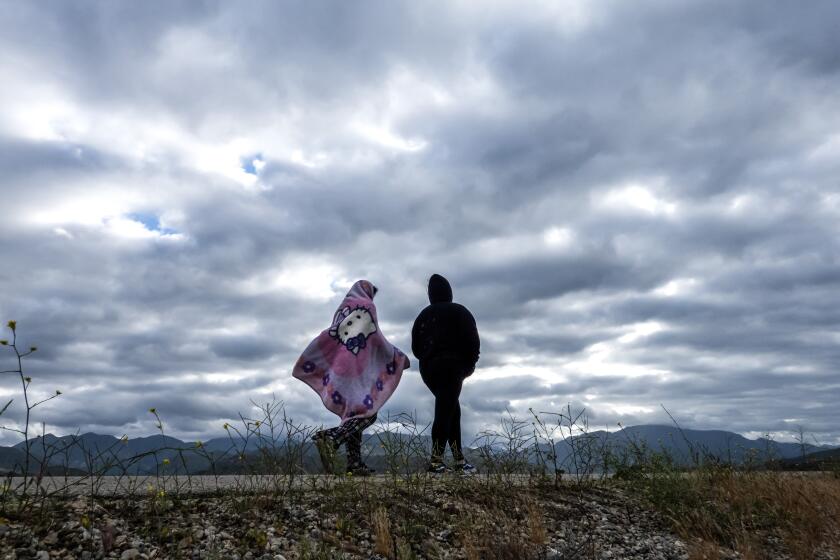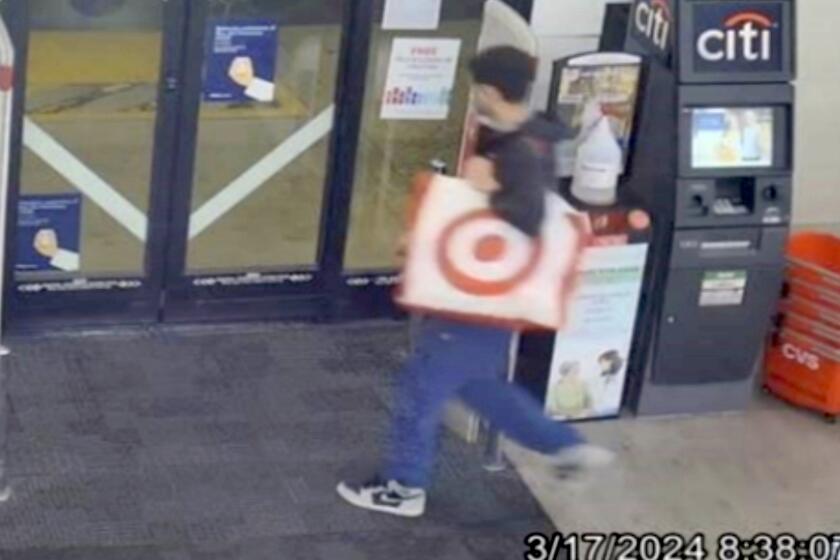We Must Do More Than Just Say No : Services: Adolescent drug use is on the rise. Despite some valiant efforts, too many are falling through the cracks.
Welcome to ER. No, not the NBC runaway hit television show, but an emergency room trauma center maybe a little too close to home. Meet Amanda and Conner, a sun-kissed Southern California teen-age couple, admitted for an apparent drug overdose.
Amanda, 16, sobs uncontrollably. At a Rave party with another couple, they snorted crystal “meth” and then swallowed it wrapped in toilet paper. Shortly after entering the hospital, Conner, 17, stops breathing. His body shakes the IV stuck in his arm meant to keep him alive. Despite the ER team’s best attempts, Conner goes into full respiratory arrest. Conner dies. Everything in the real world is not cool.
Recent research findings indicate a resurgence of adolescent drug abuse statewide. In the 1994 attorney general’s report on student drug patterns, illicit drug abuse took a sharp turn upward. Marijuana, LSD, inhalants and amphetamines top the ranks. Researchers report marijuana use up 40% with 11th-graders. In California versus the nation, marijuana and inhalant use are considerably higher.
LSD, the hallucinogen of the past, found its way back in vogue. It often produces a delayed stress syndrome, with agoraphobia, making people afraid to go outside and afraid to be with other people.
We are seeing a reversal of the big swing away from drugs, even among children in junior high school. Unfortunately, adolescents do not perceive drugs as harmful as they once did.
Without surprise, alcohol remains the most popular drug. In contrast to the situation nationally, there is no indication that drinking among California youth is declining. Furthermore, substantial numbers of students are drinking frequently and/or heavily, and driving while under the influence.
In Orange County, youth are taking their first drink at an earlier age, according to a 1994 local Health Care Agency report. This finding raises concern because these individuals are more likely to report alcohol-related problems later in life.
With adolescent alcohol and drug abuse comes an unwelcome partner, violence. In a policy paper recently released by the California Elected Women’s Assn. for Education and Research and the Assembly Office of Research, they report that in 80% of crimes, alcohol had been used within the past 72 hours. Black and Latino youth are the most frequent victims of violence.
Overall, it is evident that young people ages 9 through 15 are falling through the cracks of the system. There are major gaps in fragmented services. Despite some valiant efforts, schools, government and parents aren’t reaching them.
Let’s look at solutions. We need more community-based intervention programs for adolescents to stop their drug abuse. We need sustained prevention for high-risk older youth when they are making critical choices. We need smarter evaluation to allow us to better measure success and failure.
Funding restrictions must be loosened and accountability increased. With Orange County forced to make unprecedented fiscal decisions, we cannot afford to retreat from our commitment to youth. In this new political climate, hard data becomes especially vital to keep these services--and our children--alive.
We must re-examine the glamorous seduction of the “high” life. A momentary pleasure, especially for those too new to fast times, creates destructive, often deadly consequences.
Drugs of the moment are not fun, glamorous and sexy. Let’s be real. They hook you and control you--and they they kill you. Look at Conner. He was much too young to die.
More to Read
Start your day right
Sign up for Essential California for news, features and recommendations from the L.A. Times and beyond in your inbox six days a week.
You may occasionally receive promotional content from the Los Angeles Times.





